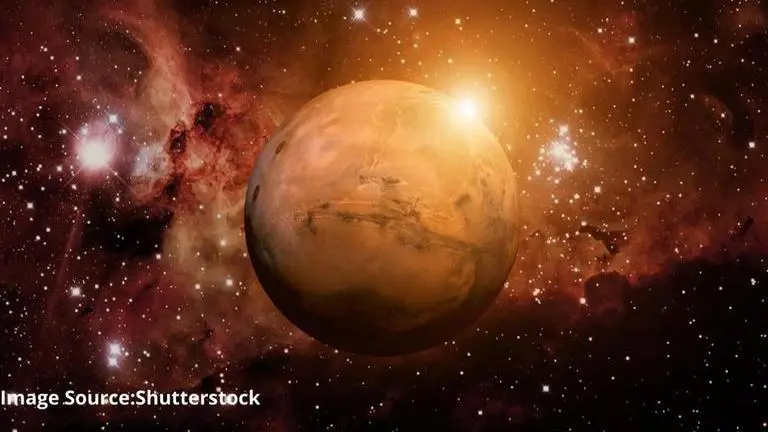Updated 29 July 2020 at 12:02 IST
Mars atmosphere: Details about Mars’ climate, weather & the Mars Perseverance Rover
Mars is the second-smallest planet in the solar system. Here is an insight into the Mars atmosphere. Details about Mars’ climate, weather & more.
- Science News
- 3 min read

The solar system comprises of eight planets namely Mercury, Venus, Earth, Mars, Jupiter, Saturn, Uranus, and Neptune. Mars is the second-smallest planet in the solar system. Located at a distance of about 93 million miles from the Earth, this planet is only larger than Mercury. Here is an insight into the Mars atmosphere.
Mars atmosphere:
Are you wondering, “Does Mars have an atmosphere”? Mars not only has an atmosphere but it also experiences a huge range of climate change. As of date, the atmosphere of Mars is extremely thin and hence it is difficult to support life on Mars. Some studies suggest the existence of life on Mars in the ancient past. The Mars atmosphere comprises of several gases such as Carbon-Dioxide, oxygen, nitrogen, argon and several others. While carbon-dioxide amounts to about 95.32% on Mars, Nitrogen amounts to about 2.7%. On the other hand, Argon amounts to 1.6%, Oxygen 0.13% and carbon-monoxide contents amount to about 0.08%. The Mars atmosphere also contains small quantities of water, Nitrogen Oxide, Neon, Hydrogen-Deuterium-Oxygen, Krypton and Xenon.
Advertisement
Weather and climate:
According to studies, Mars had a thick atmosphere about 3.5 billion years ago. However, with time the Mars atmosphere density started to reduce. A leading theory has stated the cause for the reduction in Mars atmosphere density. According to this theory, the lack of a global magnetic field caused the Mars atmosphere to become vulnerable to solar wind pressures. The average temperature of Mars at the Poles is about -80 degrees Fahrenheit to -195 degrees Fahrenheit. This temperature range is experienced during winters. On the other hand, the average temperature near the Equator is about 70 degrees Fahrenheit, at midday.
Several dust storms take place on Mars. These dust storms have the capability of blanketing the entire planet for months. Mars also experiences snowfalls. Unlike the snowflakes on earth, these snowflakes are made up of Carbon Dioxide.
Advertisement
Mars' atmosphere compared to Earth:
According to studies, Mars atmosphere density is 100 times less than Earth. Further, the atmospheric composition of Mars and Earth significantly differ from each other. While the Mars atmosphere contains huge amounts of Carbon Dioxide, the atmosphere of Earth mainly consists of gases like Oxygen and Nitrogen. Further, Mars experiences a colder climate as compared to Earth.
Mars Perseverance Rover:
Are you wondering, “What is the Mars Perseverance Rover”? The Mars Perseverance Rover was manufactured by the Jet Propulsion Laboratory for detecting signs of ancient life on Mars and for collecting rock and soil samples. The launch window of this Rover is July 30 - Aug. 15, 2020. Further, this mission will require one Mars year i.e. about 687 Earth days.
All images sourced from Shutterstock
Published By : Sneha Chugh
Published On: 29 July 2020 at 12:02 IST

